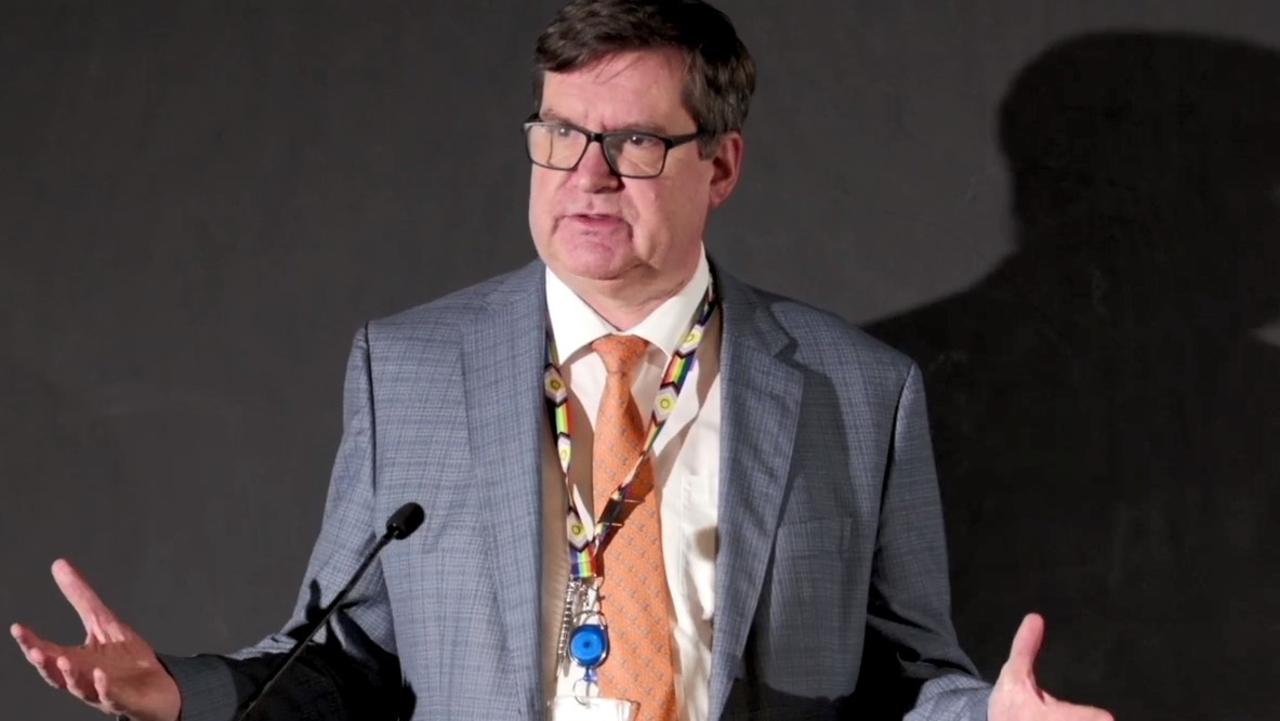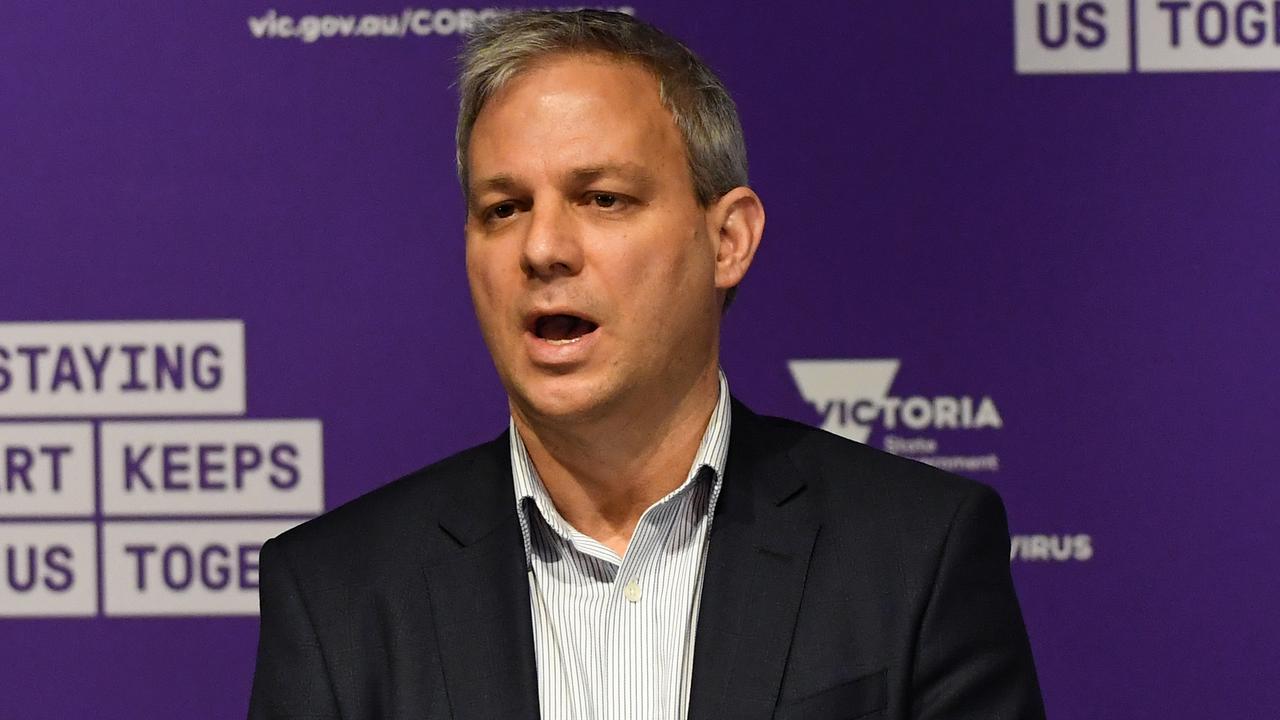246 new cases in Victoria as mystery infections rise sharply
Two Victorian truck drivers who live in separate regional towns have tested positive to Covid-19 after working in NSW.
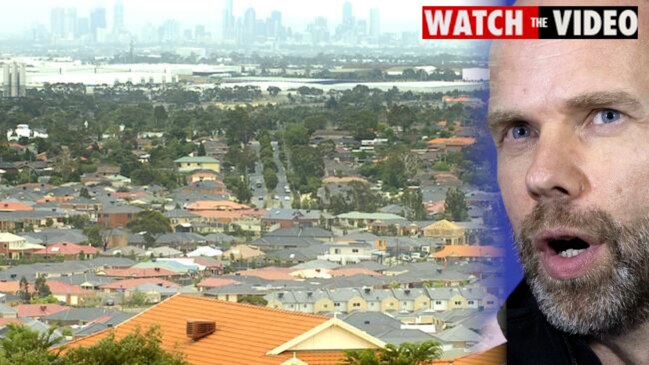
Coronavirus
Don't miss out on the headlines from Coronavirus. Followed categories will be added to My News.
• This coronavirus article is unlocked and free to read in the interest of community health and safety. Tap here for full digital access to trusted news from the Herald Sun and Leader for just $1 a week for the first 12 weeks.
Victoria has reported 246 new locally acquired infections, including 125 more mystery cases.
It brings the total number of active cases across the state to 1619.
Of Monday’s new cases, just 121 are linked to known outbreaks.
Of the latest case numbers:
• 129 were located in Melbourne’s northern suburbs
• 71 in the western suburbs
• 21 in the southeast
• Nine in the inner city and inner south
• Eight in the eastern suburbs
• Two on the Mornington Peninsula
• One in Greater Geelong
• Four in Shepparton
Health Minister Martin Foley described the latest Covid-19 outbreak as a “pandemic of the unvaccinated” at a media conference on Monday.
It comes as Covid-19 commander Jeroen Weimar revealed two truck drivers who lived in regional Victoria had contracted coronavirus in NSW.
One of the truck drivers lives at Mooroopna, and the other at Wodonga.
So far no exposure sites in Victoria have been tied to the cases.
An overwhelming number of people in hospital in Victoria were unprotected or only half-vaccinated, he said.
“Of the people in hospital yesterday, 13 in hospital were not vaccinated and were not eligible at the time they were diagnosed,” Mr Foley said.
“Sixty-seven in hospital were not vaccinated but had been eligible for the vaccine at the time they were diagnosed. Ten were partially vaccinated.
“One person was fully vaccinated yesterday but the good news is that person has been discharged as well enough to go home today.
“So I can’t reiterate this as many times as we possibly can and (in) as simple terms as we possibly can — this current outbreak is targeting the unvaccinated because that’s where the virus will go.
“Our best way in which to protect ourselves, our family, our community and to get to the other side of this is to get vaccinated.”
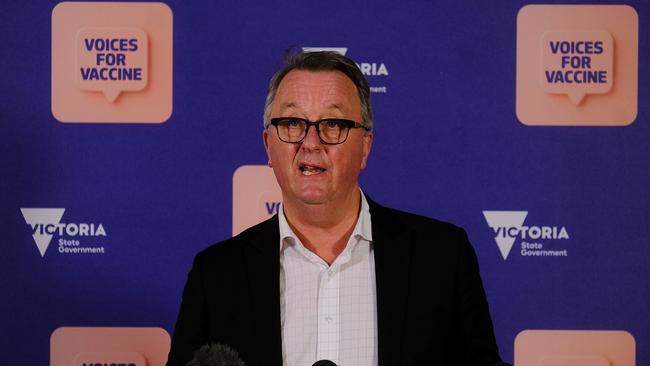
Victoria’s Covid-19 commander Jeroen Weimar also described the state’s outbreak as a “pandemic of the young, essential workers and the unvaccinated”.
Mr Weimar said 83 per cent of Monday’s 246 cases were under the age of 50.
There has also been significant spread at construction sites.
“Essential workers present a huge opportunity for us to ensure we maintain strong protocols to minimise the onward risk of the community of transmission we’re seeing, but also a particular vulnerability,” Mr Weimar said.
“If essential workers aren’t on top of their symptoms, are not getting vaccinated and not testing regularly, that presents a significant risk in terms of onward transmission.”
The Department of Heath has not yet revealed how many of the latest 246 cases had been in isolation, likely due to case interviews still being undertaken.
More than 42,250 Victorians turned out for a test in the past 24 hours, while just under 27,000 vaccine doses were administered.
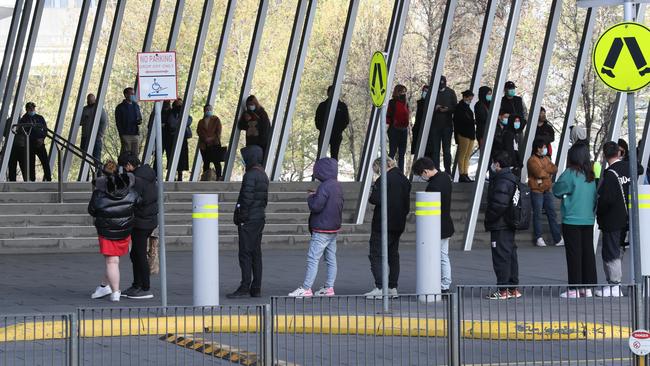
REGIONAL VICTORIA PROMISED FREEDOMS
Most of regional Victoria could be released from lockdown this week, as the regions continue to report low transmission.
Health Minister Martin Foley said there would likely be an easing of restrictions everywhere bar the regional town of Shepparton, where four more cases were recorded on Monday.
“It shouldn’t be seen as a snapback to where we were, say, in April or May, but certainly a recognition that the chain of transmission in the regions are different and in most of the regions very different to what they are in metropolitan Melbourne,” Mr Foley said.
“The regions may continue to be at risk, as we have seen with a combination of importing the virus particularly from New South Wales and making sure that the metropolitan Melbourne leaks don’t get into our regions.”
NEW FEARS FOR CONSTRUCTION SITES
Victorian authorities are concerned density limits and Covid-19 protocols are not being properly followed within the state’s construction sites, which are still allowed to operate.
The virus has spread wildly at work sites in Melbourne, including in Box Hill and Craigieburn.
While the majority of worksites were doing the right thing, Mr Weimar said about one in 10 were found not wearing masks, social distancing or following Covid-safe plans.
“There’s a small number of sites where the good principles the industry has adopted as a whole over a year now has not been adhered to,” Mr Weimar said.
“We rely upon our essential workers to do not only the most important jobs at this difficult time, but also to do them as safely as possible.
“The last thing we want is other work sites having to be closed down because we’ve got significant COVID outbreaks.”
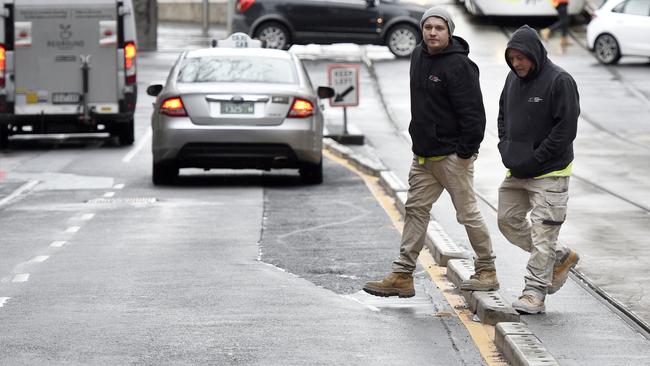
RELIEF FOR RENTERS, ROUGH SLEEPERS
The state government announced new grants for Victorians struggling to pay their rent because of lockdowns.
Victorian renters will be offered government grants of up to $1500, paid directly to landlords on their behalf.
Housing minister Richard Wynne said the one-off payment was specifically for renters paying more than 30 per cent of their income in rent and targeted at those who had lost 20 per cent or more of their income.
“A targeted initiative that is actually going to make a significant difference to people’s lives because we absolutely understand just how critical it is that particularly those who are vulnerable have safe, affordable and secure housing in the private rental market,” he said.
Read the full story here
NSW CASES SET TO PEAK
New South Wales has recorded 1281 new local infections of Covid-19, with Premier Gladys Berejiklian revealing when the state would hit its worst day.
Read the full story here
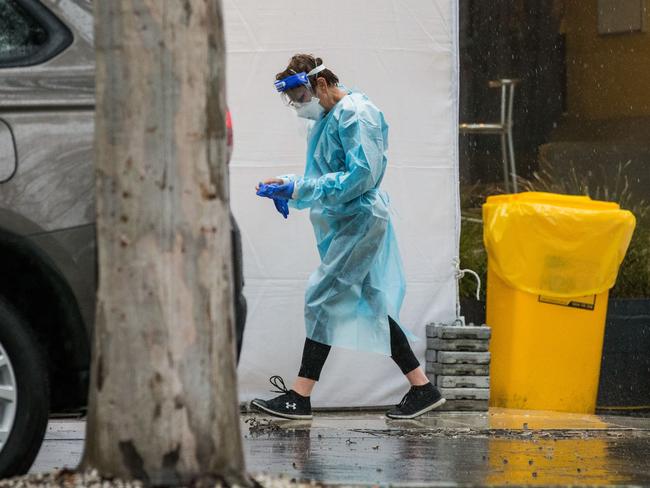
YEAR 12 VACCINATION HOTLINE SWAMPED
VCE students have been urged not to turn up to vaccination hubs without a booking.
After the state expanded its vaccine rollout to year 12 students, the priority hotline became jammed less than half an hour after opening.
More than 50,000 VCE students and staff need to get two vaccination doses by October 5 when they will sit the General Achievement Test.
Despite calls for priority vaccination for final students and their teachers first being made many months ago, priority places were only announced last week.
Some students managed to be put on hold and got through after half an hour or so, but thousands either got a busy signal or were told to disconnect and call back.
But Mr Foley said: “In terms of the phone system getting hammered first thing, we understand that that was the case and just goes to show the wild enthusiasm of this group to get vaccinated and get on with the important part of term four and their exams and we welcome that”.
“I understand things have eased up and I would encourage people to continue to try.”
Read the full story here
SOME RESTRICTIONS MAY EASE EARLY
Health Minister Martin Foley says Victoria is “ahead of schedule” with its vaccination efforts, and may be able to ease restrictions earlier than September 23.
Premier Daniel Andrews last week announced that once 70 to 80 per cent of the state had received one dose of the vaccine, eased restrictions would be brought in.
With vaccination rates ramping up, there’s hope the rules could be eased as soon as September 19.
“The sooner we get to 70 per cent first-dose vaccines, the more confidence that the public health team will have to be able to bring forward those small but important measures about relaxing the public health orders and giving Victorians due recognition for their really hard effort,” Mr Foley said.
“The sooner we get there the better.
“I’d encourage all Victorians to continue to get vaccinated in increasing numbers to bring us to the next stage of our recovery out of this global pandemic.”
Mr Foley said there was currently no plan to reduce the time between Pfizer doses.
The period between first and second doses for both Pfizer and AstraZeneca is six weeks.
“If that position changes, and subject to public health teams’ advice, then of course we’d look at it but there’s no plans for that at the moment,” Mr Foley said.
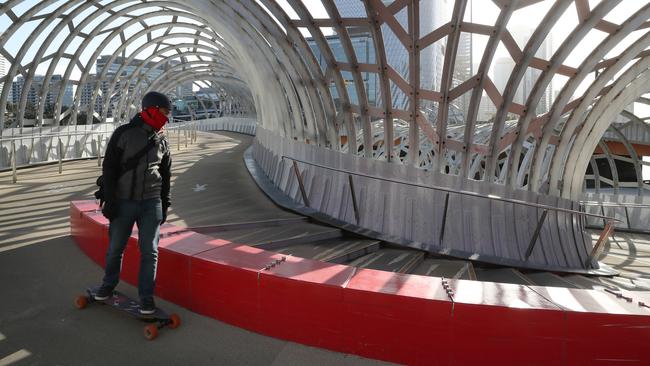
As regional Victoria gets set to exit lockdown, pubs and restaurants in freed-up areas will play host to a pilot program that would enable vaccinated customers to dine and drink outdoors.
From this month, the check-in app will become people’s vaccine passport in a move that would allow business owners to let in only those protected against the virus.
Restrictions were due to ease from September 23, when 70 per cent of the population was expected to have had one dose. But a rush to get shots in arms, especially with AstraZeneca, means some minor freedoms are on track to kick in earlier — on September 19.
“We should meet the target ahead of schedule,” Premier Daniel Andrews said on Sunday. “We have got some 343,000 to go and I’m confident we will get ahead of the five-week mark.”
This means the 5km radius will be expanded to 10km, outdoor gym equipment and skate parks will reopen, exercise will increase from two to three hours a day, childminding for school-age children will be permitted and construction sites can increase to 50 per cent of capacity.
Mr Andrews said once regional Victoria was open, it would be a “safe place” to test new technology and the return of outdoor dining.
Under changes being made to the check-in process, business owners will be informed whether or not prospective patrons are vaccinated.
“They don’t store that information but you’ll either get a tick or a cross … you’re either allowed in or you’re not,” Mr Andrews said.
“The economy, as best it can, will operate as close to normal as possible for people who had two doses. Everything from restaurants, cafes, retail, sporting events, theatre, the list goes on and on.”
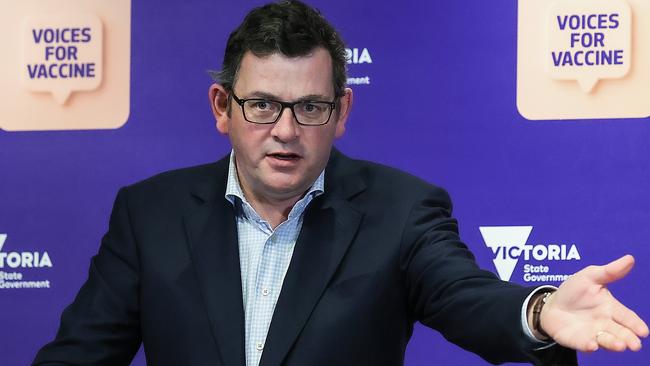
About 11,000 first-dose AstraZeneca appointments and 2000 Pfizer appointments are available over the coming week. But Mr Andrews warned people aged 60 and over who wanted Pfizer could be waiting months because they were at the end of the queue behind 12-year-olds.
More than 450,000 Pfizer doses arrived on two planes at Sydney Airport on Sunday night, after Prime Minister Scott Morrison struck a deal with Britain for four million doses.
Australia’s drug regulator has also approved a further 500,000 Pfizer doses, obtained under a swap with Singapore, which are now being dispatched nationwide. Victoria will get about 130,000 doses.
Liz Foreman, who operates The Merrijig Inn bar and restaurant in Port Fairy, said being allowed to open for the fully vaccinated would provide a much-needed boost after repeated lockdowns had taken a big financial toll.
“We would really reap the benefits of it,” she said. “Our business would do whatever we can to get back open right now. If it means we can only serve vaccinated people, then that is the way it will have to be … it is the way the world is going.”
FRANKSTON HOSPITAL AN EXPOSURE SITE
Frankston Hospital has been declared a Tier 1 exposure site, after a positive case visited the acute area of the emergency department.
Anyone who visited that area of the hospital between 12pm-10.30pm on September 3 must get tested immediately and isolate for 14 days regardless of the result.
Several hospitals have been identified as exposure sites during this latest coronavirus outbreak including: Austin Hospital, Royal Melbourne Hospital, St Vincent’s Hospital and Dandenong Hospital.
10,000 IN AGED CARE STILL NOT JABBED
Almost 10,000 aged-care workers in Victoria are yet to receive Covid-19 vaccines only two weeks before they become mandatory.
Vaccination rates in some Commonwealth-funded centre have soared since the Herald Sun named the worst performers.
But at least six centres continue to record rates below 50 per cent.
Aged Care Minister Greg Hunt said 87 per cent of Victorian workers had received one dose, and 68 per cent were fully vaccinated.
“We are seeing good rates in Victoria,” Mr Hunt said.
But about 9660 workers, including those with exemptions, remain unvaccinated.
Mr Hunt said he was confident high rates of workers would be inoculated by the September 17 deadline.
“It did, sadly, require mandating,” he said. “All the advice from the sector is they are not expecting workforce shortages.”
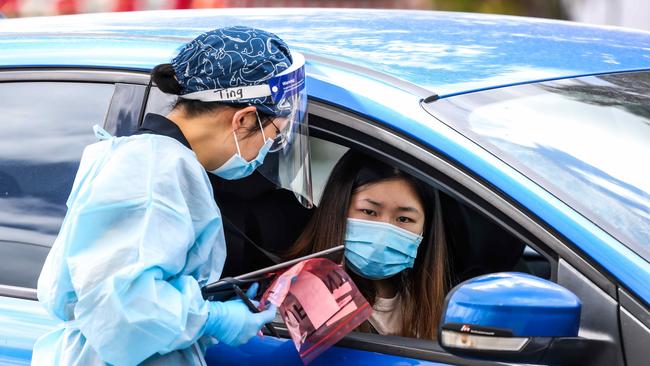
The biggest improvements were at St Vincent’s Care Services, Kew, and Honeysuckle Regional Health, which had previously recorded staff vaccination rates of 0-9 per cent.
The centres now have rates of 80-89 per cent and 70-79 per cent respectively, according to the latest My Aged Care Portal data.
But Lifeview Willow Wood at Cranbourne was only in the 40-49 per cent bracket as of August 31. And fewer than half of all staff at Royal Freemasons Bacchus Marsh and Moe centres are vaccinated.
Its chief executive officer, Kerri Rivett, said many had reported being vaccinated but were yet to provide evidence.
A “very small number” who did not want the vaccine were being educated about Covid-19 vaccines, she said.
“If they continue to choose not to be vaccinated and fail to provide a valid medical reason for non-vaccination, they will be stood down.”
Mr Hunt said a British advisory group found that an 84 per cent vaccination rate among workers provided significant fundamental coverage in aged care.
TAKE A SHOT AT 30 YEARS EXTRA LIFE
If you want to feel younger, get vaccinated. That’s the message from infectious diseases expert Peter Collignon.
“You could say it makes you 30 years younger,” he said.
That’s because your chances of dying or being admitted to hospital greatly increase with age — and since the Covid-19 vaccine slashes that risk, it means the vaccine effectively lowers your age-risk profile.
The risk of dying from Covid-19 roughly doubles every seven years older a patient is.
Other big risk factors are previous coronary disease, diabetes and obesity.
“Your death rate from Covid-19 goes up with age,” said Professor Collignon, of the Australian National University.
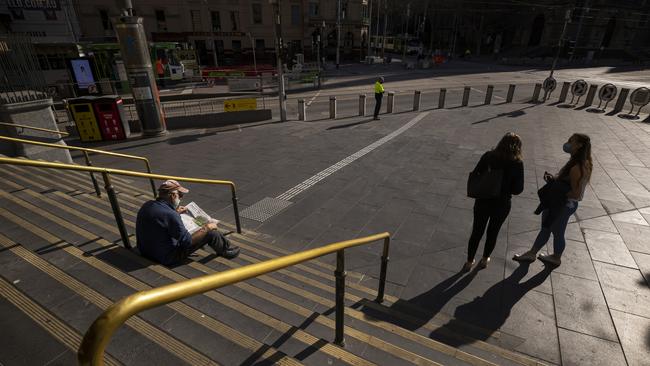
“The vaccine is very effective at stopping you dying.
“Not 100 per cent. But if you are an 80-year-old, it drops your risk and you become a 50-year-old.
“And if you’re 50 years old, you become a 20-year-old. You’re suddenly 30 years younger as far as your risk of Covid is concerned.“
In Victoria, there have been three Covid-19 deaths in the past week.
Prof Collignon said the death rate in Victoria last year was as high as 4 per cent from the original Wuhan strain, but that figure could have been skewed by the outbreaks in nursing homes.
YOUNG NEED VACCINE TO JOIN HERD
Modelling by Australian scientists shows that children should be vaccinated to reach herd immunity and the Pfizer vaccine should be made available to 12 to 40-year-olds as a priority.
Epidemiologist Emma McBryde and mathematician Dr Michael Meehan — from James Cook University’s Australian Institute of Tropical Health and Medicine — produced the model, which is published in the most recent Medical Journal of Australia.
Professor McBryde said the new model incorporated age-specific mixing, infectiousness, susceptibility and severity to assess the effect of the epidemic under different public health intervention scenarios.
“We have developed a simple, flexible online tool that is now being used around the world to develop vaccine implementation strategies,” Prof McBryde said.
“We are unlikely to achieve herd immunity … unless vaccination is extended to younger ages or combined with other measures.
“Australia should now prioritise delivering Pfizer vaccine to 12-40-year-olds.”
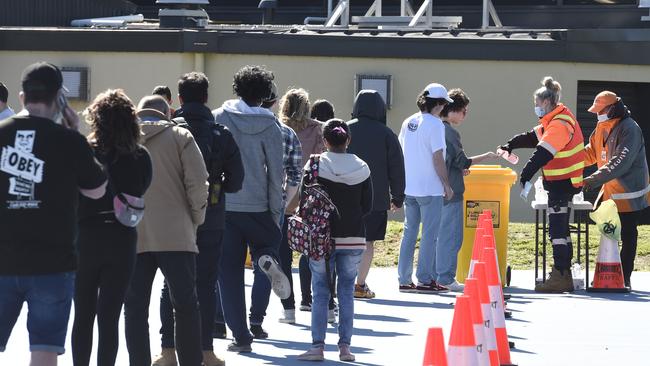
VAX-CHECK SOFTWARE GETS TO WORK
Vaccination-tracking software is to be sent to Australian companies to allow employers to keep tabs on staff vaccinations.
It comes as research shows two-thirds of workers are comfortable with employers storing their vaccination records, but legal experts warn of potential privacy issues.
Created by Melbourne-based tech firm Ento, VaxTrack, is already being configured for workplaces – including in childcare, aged care and labour hire.
Ento chief customer officer Ami Price-Gagnon said it had received interest from many industries and states.
“It’s a single tool that lets employees upload proof of vaccination, can block employees from being rostered on to certain shifts if their vaccine requirements are not met, and gives employers visibility of how much of their workplace is vaccinated,” she said.
“We can also set up expiry dates on vaccines (to alert) if booster shots become needed.”
Ms Price-Gagnon said most of the businesses that had opted in were in childcare, aged care and labour hire, but predicted hospitality would soon be added to the list.



